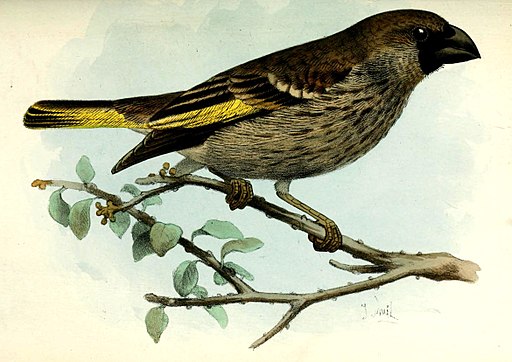Superregnum: Eukaryota
Cladus: Unikonta
Cladus: Opisthokonta
Cladus: Holozoa
Regnum: Animalia
Subregnum: Eumetazoa
Cladus: Bilateria
Cladus: Nephrozoa
Superphylum: Deuterostomia
Phylum: Chordata
Subphylum: Vertebrata
Infraphylum: Gnathostomata
Megaclassis: Osteichthyes
Cladus: Sarcopterygii
Cladus: Rhipidistia
Cladus: Tetrapodomorpha
Cladus: Eotetrapodiformes
Cladus: Elpistostegalia
Superclassis: Tetrapoda
Cladus: Reptiliomorpha
Cladus: Amniota
Classis: Reptilia
Cladus: Eureptilia
Cladus: Romeriida
Subclassis: Diapsida
Cladus: Sauria
Infraclassis: Archosauromorpha
Cladus: Crurotarsi
Divisio: Archosauria
Cladus: Avemetatarsalia
Cladus: Ornithodira
Subtaxon: Dinosauromorpha
Cladus: Dinosauriformes
Cladus: Dracohors
Cladus: Dinosauria
Ordo: Saurischia
Cladus: Eusaurischia
Subordo: Theropoda
Cladus: Neotheropoda
Cladus: Averostra
Cladus: Tetanurae
Cladus: Avetheropoda
Cladus: Coelurosauria
Cladus: Tyrannoraptora
Cladus: Maniraptoromorpha
Cladus: Maniraptoriformes
Cladus: Maniraptora
Cladus: Pennaraptora
Cladus: Paraves
Cladus: Eumaniraptora
Cladus: Avialae
Infraclassis: Aves
Cladus: Euavialae
Cladus: Avebrevicauda
Cladus: Pygostylia
Cladus: Ornithothoraces
Cladus: Ornithuromorpha
Cladus: Carinatae
Parvclassis: Neornithes
Cohors: Neognathae
Cladus: Neoaves
Cladus: Telluraves
Cladus: Australaves
Ordo: Passeriformes
Subordo: Passeri
Infraordo: Passerida
Superfamilia: Passeroidea
Familia: Fringillidae
Subfamilia: Carduelinae
Genus: Rhynchostruthus
Species: Rhynchostruthus socotranus
Name
Rhynchostruthus socotranus Sclater & Hartlaub, 1881
References
Proc. Zool. Soc. L. Pt1 p.171 BHL
IUCN: Rhynchostruthus socotranus (Least Concern)
Vernacular names
Cymraeg: Tewbig euradain
Deutsch: Sokotragimpel
English: Socotra Golden-winged Grosbeak
Esperanto: Sokotra dikbekulo
suomi: Sokotrankeltasiipi
français: Grand-verdier de Socotra
日本語: キンバネマシコ
Nederlands: Socotragoudvleugelvink
svenska: sokotraguldvingefink
The Socotra golden-winged grosbeak or Socotra grosbeak (Rhynchostruthus socotranus) is a finch endemic to Socotra, an island in the Indian Ocean off the coast of Yemen. R. socotranus is by some authorities held to be the only species of the then-monotypic genus Rhynchostruthus, including all other golden-winged grosbeaks therein as subspecies. But in recent times the three populations are usually considered a distinct species, with R. socotranus being limited to the Socotra population, the Arabian golden-winged grosbeak becoming R. percivali, and the Somali golden-winged grosbeak R. louisae.[2]
Contents
1 Description
2 Ecology and status
3 Footnotes
4 References
5 External links
Description
The males are grey-brown overall with a black bill, a dark head with a black mask, large white cheek patches, and large, bright yellow patches on the wings and tail. The females are similar to the males though somewhat duller, and the juveniles are rather streaky and lack the adults' distinctive head pattern.
Ecology and status
The Socotra golden-winged grosbeak is found in a variety of habitats from the mountains to sea-level. It typically inhabits fairly arid scrub- or woodland dominated by spurges (Euphorbia), acacias (Acacia) and juniper (Juniperus). The fruits of these plants appear to form the bulk of its diet.
The population is estimated to be about 6500 adult individuals. Despite being limited to a single island, its future appears to be rather secure. Consequently, the IUCN still classifies it as a species of least concern, even after the mainland populations have been split off.[3]
Footnotes
BirdLife International (2016). "Rhynchostruthus socotranus". IUCN Red List of Threatened Species. 2016: e.T22735261A95107004. doi:10.2305/IUCN.UK.2016-3.RLTS.T22735261A95107004.en. Retrieved 11 November 2021.
Kirwan & Grieve (2007)
BLI (2004, 2008)
References
BirdLife International (BLI) (2008) Socotra Grosbeak Species Factsheet. Retrieved 2008-MAY-27.
Kirwan, G.M. & Grieve, A. (2007): Studies of Socotran birds II. One, two or three species: towards a rational taxonomy for the Golden-winged Grosbeak Rhynchostruthus socotranus. Bulletin of the African Bird Club 14(2): 159–169.
Retrieved from "http://en.wikipedia.org/"
All text is available under the terms of the GNU Free Documentation License


